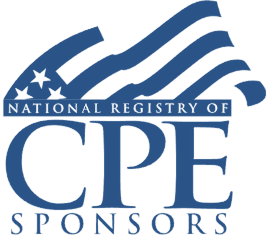Welcome! Save 30% on all CLE, CPE, and Professional Skills webinars, plus 15% off any annual pass with code HOLIDAY25
About the Course
Introduction
This course will discuss retirement plan options for owners of limited liability companies, partnerships, C corporations, S corporations, sole proprietors, and other businesses. Our panel of qualified plan experts will reveal strategies to substantially increase owner contributions, minimize staff contributions, and create greater flexibility.
Description
Properly designed qualified retirement plans are a highly effective means for sheltering business owner and self-employed income from taxes, retaining valuable employees, and protecting assets from creditors. Often, small businesses have qualified retirement plans in place, but have not structured their retirement plans to maximize the significant tax benefits available for their owners.
Retirement plans generally fall into one of two categories: defined contribution plans and defined benefit plans. Defined contribution plans include profit-sharing, traditional and Roth 401(k), and safe harbor 401(k) plans. Defined benefit plans include traditional defined benefit plans and cash balance plans.
For 2025, the maximum contribution to a defined contribution plan is $70,000, or, for individuals age 50 or older by December 31, 2025, $77,500 with a 401(k) "catch-up" feature. However, the maximum contribution for individuals ages 60-63 is $81,250 with a 401(k) "catch-up" feature for 2025. Since defined benefit plans consider work history, age, life expectancy, compensation levels, and expected pay-outs, annual contributions to a defined benefit plan can be significantly higher than the amount that can be contributed to a defined contribution plan. Combining plans can help maximize deductible plan contributions on an owner's behalf.
There are additional considerations for qualified retirement plans. Both types of plans require mandatory testing and reporting. Defined benefit plans require actuarial computations. All plans must be updated periodically for legislative changes and must be maintained in both documentary and operational compliance with all applicable laws and regulations. As a tax practitioner or financial adviser, you should understand the best plan or combination of plans for your clients.
Listen as our retirement plan experts review the numerous options available for retirement plan savings, including SEPs, 401(k)s, profit-sharing plans, defined benefit plans, cash balance plans, and the recent changes made impacting retirement withdrawals, including RMDs.
Presented By

Mr. Miller is the Chief Enrolled Actuary and Technical Director of the Pension Administration Department of Danziger & Markhoff LLP. He counsels individuals, professional corporations and business owners in connection with the design and operations of their retirement plans. Mr. Miller works closely with the firm's pension law attorneys to maximize the tax and financial benefits of retirement plans.

Mr. Roth is a partner of Danziger & Markhoff LLP with over 35 years of experience as an ERISA attorney. He is a frequent lecturer in the areas of pension, profit-sharing and employee benefits law. Mr. Roth has substantial experience in designing and implementing qualified plans for business owners that maximize deductible contributions on their behalf. His services include designing, drafting and obtaining IRS qualification for a broad range of defined contribution and defined benefit plans, as well as ensuring their continued compliance with applicable law. Mr. Roth also has substantial experience in connection with prohibited transactions and fiduciary matters.
-
BARBRI is a NASBA CPE sponsor and this 110-minute webinar is accredited for 2.0 CPE credits.
-
BARBRI is an IRS-approved continuing education provider offering certified courses for Enrolled Agents (EA) and Tax Return Preparers (RTRP).
Date + Time
- event
Thursday, March 20, 2025
- schedule
1:00 p.m. ET./10:00 a.m. PT
- Benefits of Qualified Retirement Plans
- Maximize tax deductions for owners
- Asset protection
- Recruit and retain staff
- 2025 IRS Plan Limits
- Types of Qualified Retirement Plans
- Defined Contribution Plans – Laying the Foundation
- 401(k) Plans
- Traditional 401(k) – Immediate tax deduction / tax-deferred growth
- Roth 401(k) – Tax-free growth and withdrawal
- ADP testing and top-heavy testing
- Safe Harbor designed-based alternative to ADP testing
- Profit Sharing Plans – Flexible New Comparability (Cross-Tested) Contributions
- 401(k) Plans
- Defined Benefit Plans – Maximizing Tax Deferral for Business Owners
- Traditional Defined Benefit Plans - owner/spouse only
- Cash Balance Plans – businesses with staff
- Legal Update – SECURE Act, SECURE 2.0, etc.
- Future Trends – How they will impact business owners
The panel will review these and other key issues:
- Recent changes in law, including SECURE Act and SECURE 2.0 Act of 2022
- Coordinating the various IRS limits on deferrals, contributions, benefits, and compensation
- Using new comparability (cross-tested) plans to maximize contributions for relatively older, higher-paid owners
- The benefit of qualified retirement plans over SEPs
- Choosing between a traditional defined benefit plan and a cash balance plan
- IRS Cycle 3 mandatory restatement of defined benefit and cash balance plans
- Case studies of retirement plan structures
- Highlighting the best qualified retirement plan design for various businesses
Learning Objectives
After completing this course, you will be able to:
- Identify various retirement planning vehicles
- Decide which retirement option may be the best option
- Ascertain your in-plan Roth conversion options
- Clear up several misconceptions about ERISA plans
- Field of Study: Taxes
- Level of Knowledge: Intermediate
- Advance Preparation: None
- Teaching Method: Seminar/Lecture
- Delivery Method: Group-Internet (via computer)
- Attendance Monitoring Method: Attendance is monitored electronically via a participant's PIN and through a series of attendance verification prompts displayed throughout the program
- Prerequisite: Three years+ business or public firm experience preparing complex tax forms and schedules, supervising other preparers or accountants. Specific knowledge and understanding of pass-through taxation, including taxation of partnerships, S corporations and sole proprietorships, qualified business income, net operating losses and loss limitations; familiarity with net operating loss carry-backs, carry-forwards and carried interests.

BARBRI, Inc. is registered with the National Association of State Boards of Accountancy (NASBA) as a sponsor of continuing professional education on the National Registry of CPE Sponsors. State boards of Accountancy have final authority on the acceptance of individual courses for CPE Credits. Complaints regarding registered sponsons may be submitted to NASBA through its website: www.nasbaregistry.org.

BARBRI is an IRS-approved continuing education provider offering certified courses for Enrolled Agents (EA) and Tax Return Preparers (RTRP).

BARBRI CE webinars-powered by Barbri-are backed by our 100% unconditional money-back guarantee: If you are not satisfied with any of our products, simply let us know and get a full refund. Contact us at 1-800-926-7926 .
Unlimited access to premium CLE courses:
- Annual access
- Available live and on-demand
- Best for attorneys and legal professionals
Unlimited access to premium CPE courses.:
- Annual access
- Available live and on-demand
- Best for CPAs and tax professionals
Unlimited access to premium CLE, CPE, Professional Skills and Practice-Ready courses.:
- Annual access
- Available live and on-demand
- Best for legal, accounting, and tax professionals
Unlimited access to Professional Skills and Practice-Ready courses:
- Annual access
- Available on-demand
- Best for new attorneys
Related Courses
Recommended Resources

How CPE Can Bridge the Gap Between What You Know and What You Need to Know
- Career Advancement



